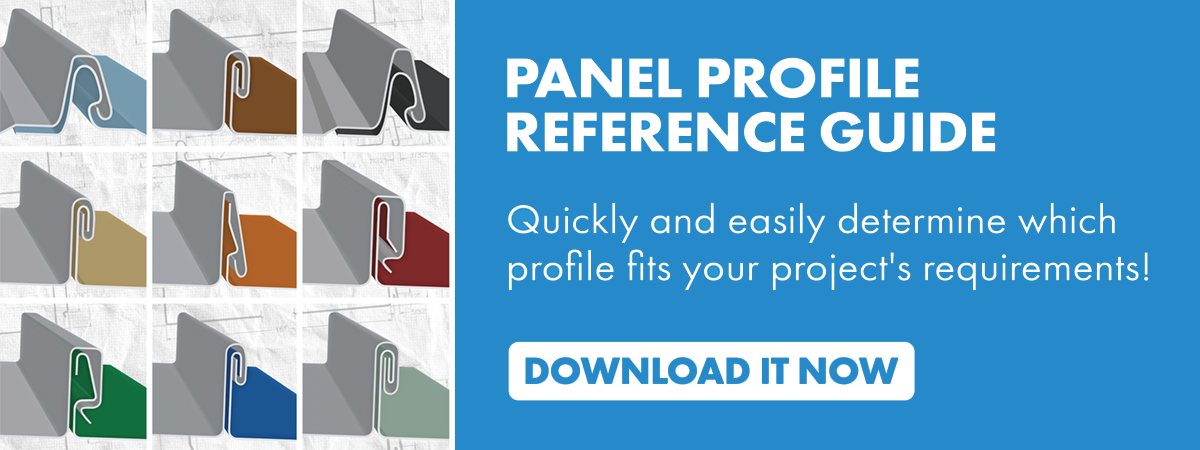If you’re a contractor, you want to make sure you have as much information as possible when it comes to a metal roofing project.
Having an overview of certain topics, such as wind uplifts and governing bodies like the American Society of Civil Engineers (ASCE), can help. It can be even more valuable to dig in-depth into those topics and figure out how to make them applicable to your unique project.
Sheffield Metals International (SMI) is a leading provider of metal coil and sheets. We’ve been in business for years and have a technical and experienced team that understands how to translate testing calculations and various criteria into actionable insights for our customers. We’ve helped hundreds of architects, contractors, and homeowners find the products they need based on their specific situation, and we’re committed to educating our buyers on all the different aspects of our industry.
In this article, we’ll take a deeper dive into wind uplifts and uncover the engineering design criteria related to them, along with how to use that information in a practical setting for your customer’s next metal roofing project.
By the time you’re done reading this article, you’ll better understand how to use criteria such as wind speed maps, exposure categories, and roof zones to find specs for your design and ensure the roof you’re working on will last.
What Are Wind Uplifts?
Wind uplifts are the positive and negative pressures acting on a roof. Wind uplifts are naturally occurring and will take place in different degrees of magnitude all the time, based on various factors such as your location and the type of roofing design your customer has. If you’re looking for a more in-depth explanation of roof uplifts, check out our related articles on the topic.
Wind Uplifts: What Are They and How Do They Affect Standing Seam Metal Roofs? – Sheffield Metals
Metal Roof Wind Uplift Testing: Everything You Need to Know – Sheffield Metals
Various criteria related to wind uplifts can help you get a better picture of what type of engineering you’ll use for your specific metal roofing project. Wind speed maps are a very useful tool that can put a design on the right track.
What Criteria Are Involved With Wind Uplifts?
Wind Speed Maps

Governing bodies, like ASCE, utilize wind speed maps to determine the maximum wind speeds you should see in a specific area. Maps like these are essential because wind speeds are different everywhere. This is especially true in a state like Florida, where there are a variety of different wind speeds all across the region.
Someone installing a metal roof in North Florida, for example, may need to fit requirements for wind speeds of 130 mph, while a contractor in Miami-Dade County could need to match wind speeds of 200 mph. Even though they’re in the same state and installed on a similar structure, those two buildings will require very different design considerations based solely on their geographic location.
The key to remember is that wind speeds are different everywhere and affect every building differently based on its design. Other criteria that can help with the safety and durability of your customer’s metal roofing design are risk categories.
Risk Categories

Risk categories characterize a building based on its potential hazard to human life. There are four total categories, with Category I signifying the least potential hazard to human life and Category IV posing the highest risk to human life:
- Risk Category I: These buildings pose the lowest risk to human life. They house few to no occupants or are temporary facilities. Agricultural buildings or minor storage facilities are included in this category.
- Risk Category II: Most buildings are included in Category II and are characterized by standard occupancy. Buildings such as fast food restaurants would be an example of a Category II.
- Risk Category III: Larger buildings with many occupants, such as colleges, hospitals, and jails are a part of risk category III.
- Risk Category IV: This is the highest level risk category and takes into account structures that are in continued use and designated as “essential” in times of emergency or disaster response. Fire stations, police stations, and emergency vehicle garages are considered risk category IV.
As a contractor, knowing these different risk categories is essential. While you always want to be safe and ensure you’re meeting all safety requirements, you’ll want to take extra care for buildings that are a part of the Category IV zones and ensure that they are designed to withstand anything their region will throw at them.
A durable roof with products that meet and exceed testing standards has the potential to save lives and keep those inside safe from the outside elements in times of emergency. Likewise, for buildings housing electrical grids, it could mean the difference in keeping an entire coast of the country with power.
While risk categories deal with threats to human life, exposure categories take into account the area immediately surrounding the building and how it will affect wind speeds.
Exposure Categories

Exposure categories center around geographic locations and look at what’s around a building to block the wind it may experience. Exposure categories are broken up into three different categories — B, C, and D:
- B: This category focuses on urban areas. With these types of structures, many surrounding buildings will help break up the wind and block them, so it doesn’t hit with full force.
- C: Buildings with few obstructions, such as those located in an open field, would be considered exposure category C. These structures have little help to slow down wind before it makes an impact.
- D: Category D includes any structures located along the coast or on a large body of water. Buildings here have nothing to block wind as it’s building up speed. Wind will hit a Category D structure first, taking the brunt of the force of the wind.
It’s important to look at exposure categories because these will affect your project’s design pressures. If your roofing project is in a category B exposure category, you may not need as high of a design pressure as a roof that’s located somewhere right on the water.
Geographic and immediate location can significantly impact how wind will impact your roof. You should also keep in mind the unique design of the roof and how wind may affect different parts of the engineering.

Roof Zones
There are three main zones on a roof, each receiving different wind pressures. These are the corner zones, which are where multiple outside edges of the roof meet, the perimeters — any edge, including eaves and rakes, and the field area, which is the inside, central portion of the roof.
The corner zones will receive the most wind pressure, followed by the perimeters, and the field area will take the least amount of force. When you get calculations done for a roof, you’ll receive a unique design pressure for each roof zone.
Because the corners of a roof will receive the most wind pressure, you’ll need to match the highest design pressures for these areas to ensure they can stand up to the regional conditions. Designing a project to withstand forces at the edges of your roof not only protects those edges but also the entire roof. If wind is able to get under a panel, there’s a chance that the panel and even your entire roof could come apart.
It’s imperative to make sure your zones are calculated properly so you can make sure you have the proper clip spacing per the testing on the panel to meet those higher pressures.
Will Engineering Requirements Be Provided in Specifications?

Ideally, engineering requirements will be provided in the project. If not, the criteria that will be used to get the calculations done should be.
They’ll provide the wind speed the roof needs to meet, or you’ll have to refer to a wind speed map. They may also provide other criteria, such as the exposure category and risk category.
Even if you’re not provided with exact engineering requirements, you should be able to gather enough information between the plans and the specs.
If you can’t find the specifications you need, or if you’re unsure about the information you have, be sure to contact the general contractor or architect to make sure you have the proper information.
What’s the Bottom Line When it Comes to Engineering?
A roofing project will only perform as well as the testing and criteria it’s measured for. If a roof has not been designed for specific regional requirements and the materials haven’t been properly tested, there’s no way of knowing how it will perform.
Before beginning work on a project, contractors should take time to understand the requirements your customer’s building will need when it comes to criteria like wind speeds and exposure categories.
Every building is unique, whether it’s the region it’s located in, how high it is off the ground, whether it has open sides, or its proximity to nearby terrain. With all those variables, it can be helpful fall back on a system that enables you to factor those in and ensure a roof will perform well in a specific location.
Testing is not a one-size-fits-all all — all the criteria we’ve covered here will impact the type of engineering you’ll need for a metal roofing project.
Taking all these criteria into account will prioritize safety for your roofing project, whether that be a home, a school, or an emergency service station. Testing and calculations will help you put everything together and allow you to complete a quality installation for the project type and the location that it’s in.
How Do I Choose the Right Panel Profile Based on Design Calculations?
You’ll want to contact the manufacturer you’re working with to find the right panel for your customer’s roof. Some manufacturers may have an engineering cheat sheet that already provides testing specifications, including the material the panel is made of and the type of assembly that it’s installed over.
Look at your calculations; you’ll need to note the highest design pressure you need to meet and then find the panel that can meet at least that highest design pressure. Your manufacturer may have systems tested for corner assemblies since it will provide the highest design pressure.

Remember that you’ll likely receive different design pressures for different roof zones, so you may have different clip spacings for these areas and tighter clip spacings for the corners. Your manufacturer can help you determine the best design for your project’s specific calculations.
Where Can I Purchase the Right Panel?
When it comes to roofing, safety is a top priority. No matter what type of building it is, you want to make sure that you’re installing something that will help keep those inside safe. And while testing and calculations can help you determine what requirements you’ll need to meet, you’ll still have to find the right panel profile to match.
Looking for a convenient and effective way to find the right materials, instructions, and details for your metal roofing project?
Sheffield Metals provides testing specs and a team of technical and professional engineers who can support you the entire way, offering you the information you need to make your project go smoothly.
